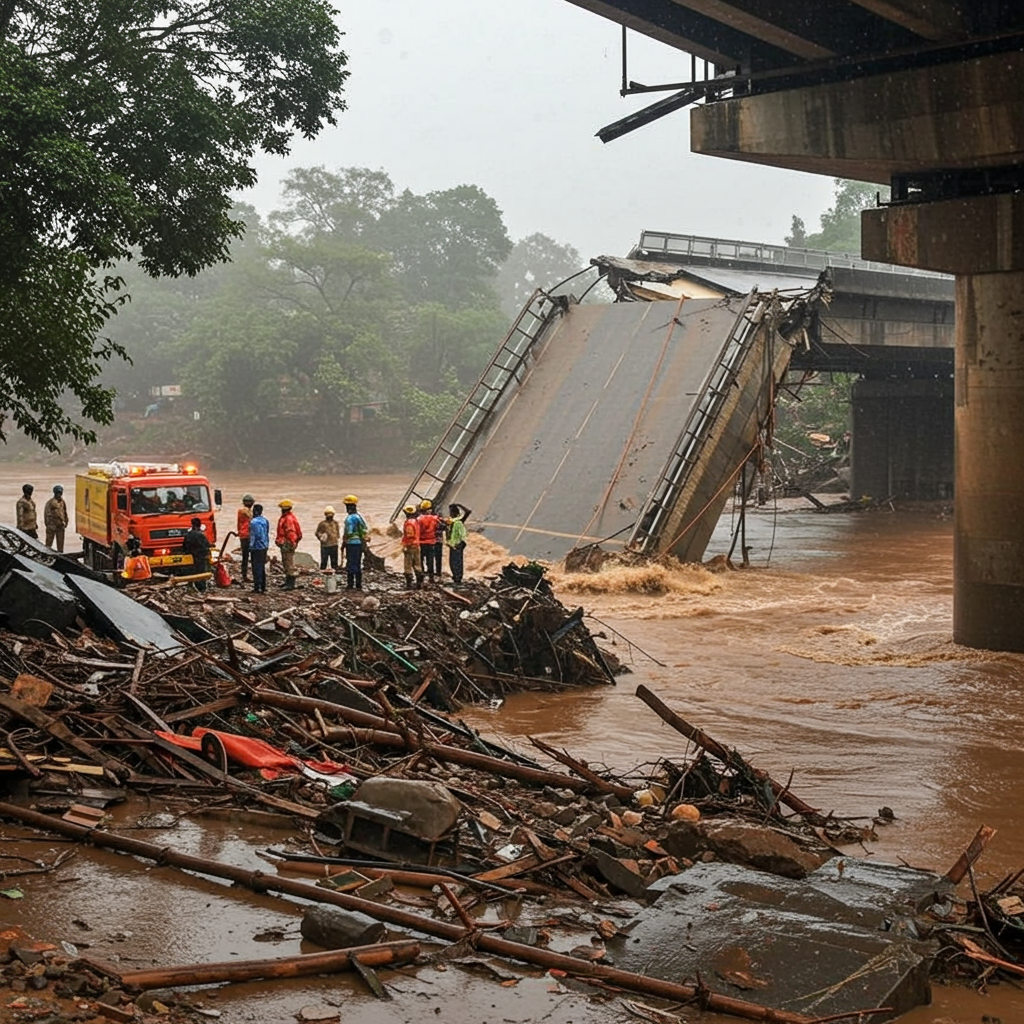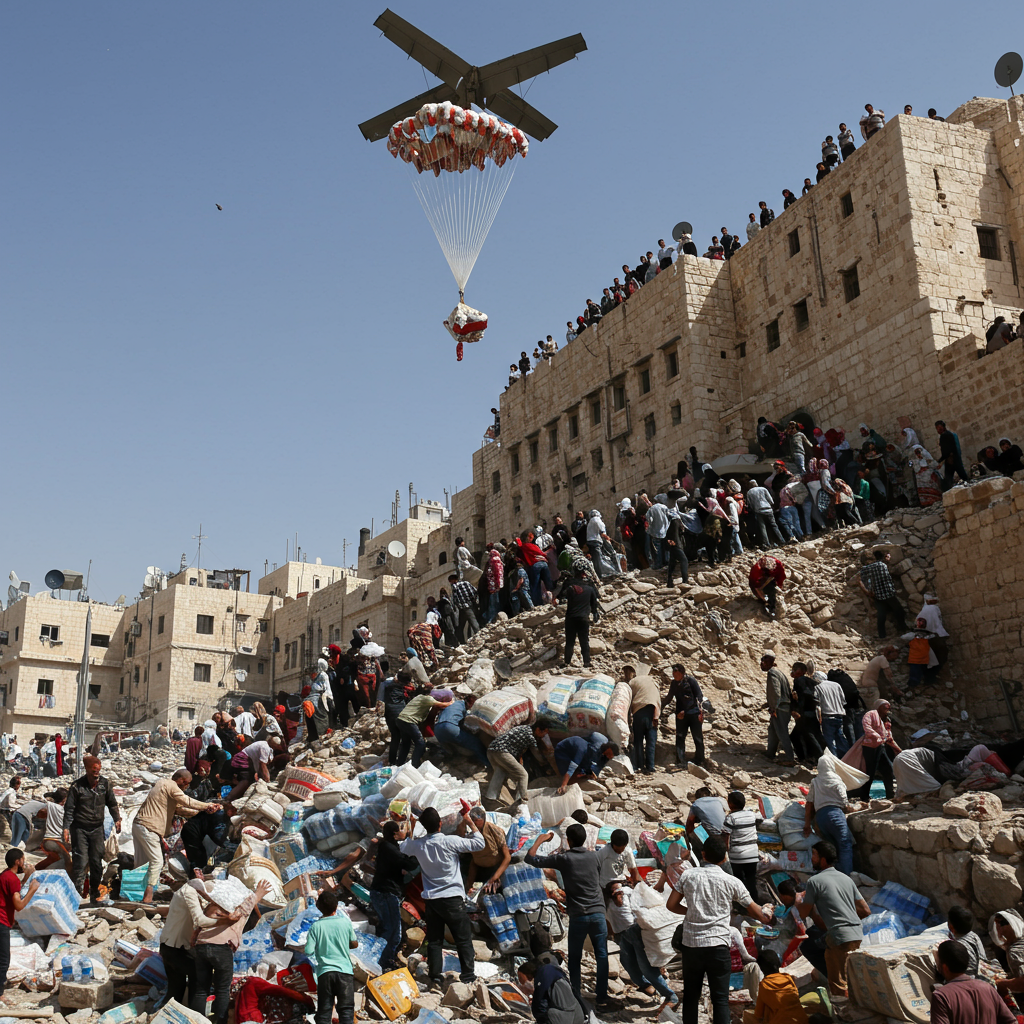Tragedy Strikes Pune: What Led to the Fatal Bridge Collapse?
A devastating incident unfolded near Talegaon in Maharashtra’s Pune district when a nearly 30-year-old narrow bridge over the Indrayani River collapsed on a Sunday afternoon. The tragedy, which occurred at the popular tourist spot of Kundmala, claimed the lives of four people and left over 50 injured. Many visitors on the structure plunged into the rain-swollen river, with some reportedly swept away by the currents. Rescue operations, involving NDRF, fire brigades, and local volunteers, concluded after approximately 15 hours, with a total of 55 people rescued.
The collapse has cast a harsh light on critical issues, including structural neglect, lack of maintenance, and severe overcrowding on a structure ill-equipped for the heavy footfall it routinely witnessed.
Anatomy of a Collapsed Structure
The bridge, connecting Shelarwadi and Indori village, measured approximately 470 feet in length (or 100 meters according to other reports) but was only about four feet (or 3.5 meters) wide. Its composition included a stone slope, two iron sections, and a cement section. Despite its vital link for local villagers, farmers, workers, and students who crossed on foot, officials and locals noted its extreme narrowness meant it could safely accommodate only a single bike and two people at a time.
However, the bridge had become a major draw for tourists visiting Kundmala, especially on weekends. Reports indicate that roughly eight thousand people were passing through the dilapidated structure every weekend. At the time of the collapse, witness accounts and official estimates suggest anywhere from over 100 to possibly 250-300 people were on the bridge, along with several two-wheelers – a weight far exceeding its design capacity.
Ignoring the Warning Signs: Lack of Audit, Rust, and Potholes
Multiple factors converged to create the conditions for this disaster. A critical oversight was the absence of regular structural audits on the bridge for years. Locals had recognized the deteriorating state of the structure, pointing to visible rust on the iron sections and the appearance of potholes. Despite their efforts to temporarily patch the potholes with cement blocks, the underlying issues persisted.
Adding to the peril, warning boards were reportedly in place advising against two-wheelers and large crowds, yet these advisories were widely ignored by visitors flocking to the scenic spot.
A History of Unheeded Calls for Repair
The community’s concerns about the bridge’s safety were not new. As far back as two years ago, locals had formally written to the Public Works Department and the Gram Panchayat, explicitly requesting repairs and a ban on tourist movement due to the structure’s condition and the increasing crowds. These crucial requests went unheeded.
The issue of the bridge’s poor state and the need for reconstruction was even raised by former MLA Digambardada Bhegde in 2017 and subsequently in Parliament. Despite these persistent demands and a sanctioned amount of Rs 80,000 last year for repair by BJP MLA Ravindra Chavan, the necessary work was never carried out, and the funds remained unused.
Furthermore, there was a noted lack of consistent security or crowd management at the site, although police presence was initiated on Saturdays after repeated village demands.
Moments Before the Collapse
In a stark illustration of the danger, a local resident had contacted the police control room just hours before the incident on Sunday, reporting the severe overcrowding on the bridge. Three officials arrived, successfully dispersed the crowd, and left. Tragically, as soon as the police departed, the crowd returned to the bridge, setting the stage for the disaster.
Witnesses recounted the terrifying moments as the iron section of the bridge began shaking for several minutes under the immense weight before finally giving way, snapping and sending people and vehicles plunging into the river below. Survivors described screams and the struggle against the water, with locals bravely rushing to initiate rescue efforts even before official teams arrived.
Official Response and Ongoing Inquiry
Following the tragedy, officials, including Deputy Chief Minister Ajit Pawar and Disaster Management Minister Girish Mahajan, visited the site. Preliminary assessments from officials point directly to the combination of the old, rusted structure, lack of maintenance, and severe overcrowding as the primary causes.
An investigation committee has been formed to probe the incident, examine potential administrative lapses, and determine if revised standard operating procedures are needed for managing high-risk tourist locations. Compensation of ₹5 lakh has been announced for the families of the deceased. The incident serves as a somber reminder of the critical importance of timely infrastructure maintenance, structural audits, and effective crowd control at public places, particularly those experiencing high tourist volumes.




